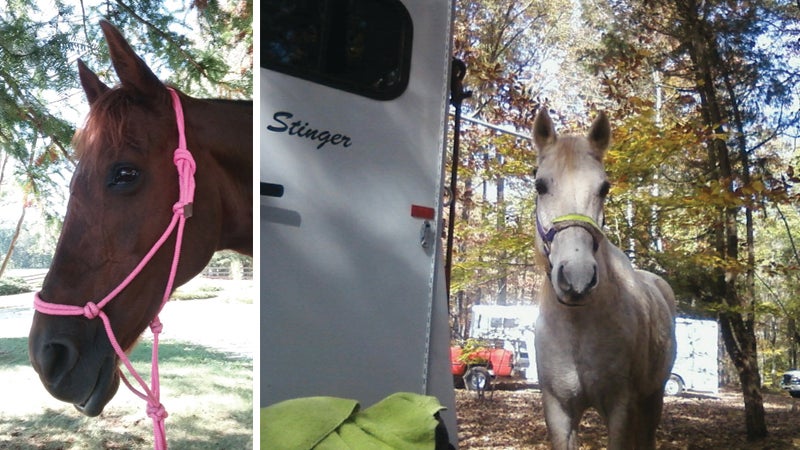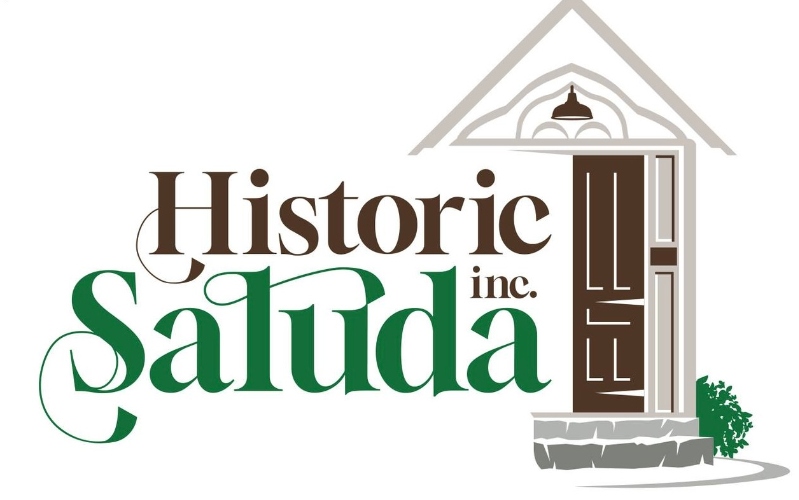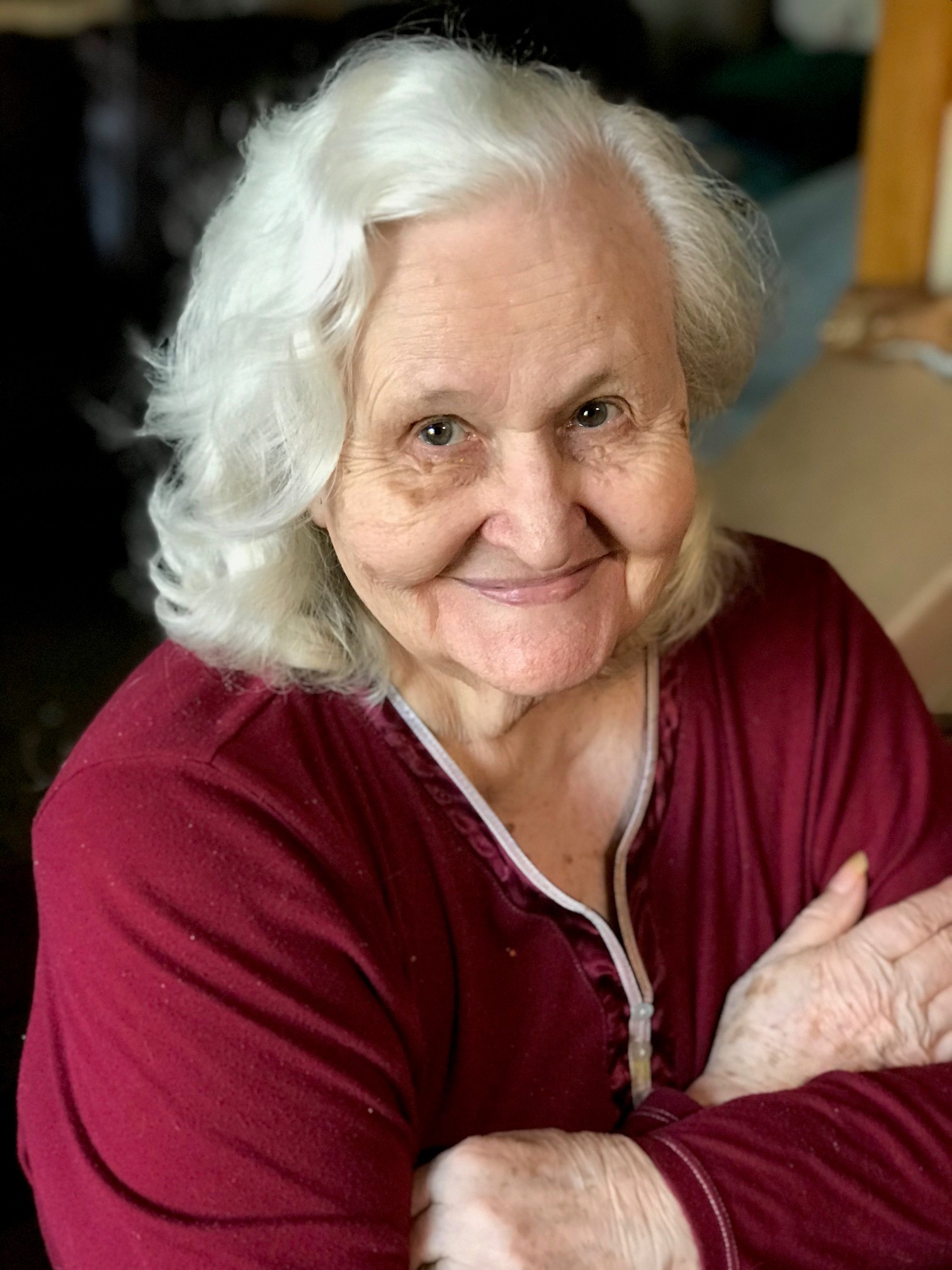Two Lost Horses & Some Tips
Published 1:51 pm Thursday, December 7, 2017

- Left: Hope looking relieved in Carol Ten Broek’s halter. Photo by Carol Ten Broek Right: Secured to trailer at horse camp… maybe! Left: Hope looking relieved in Carol Ten Broek’s halter. Photo by Carol Ten Broek Right: Secured to trailer at horse camp… maybe! Photo by Judy Heinrich
Not much can sink your heart as fast as discovering your horse is missing.” So said local equestrian Dana Kind, who was at FENCE for an October clinic when her horse escaped her stall and went missing.
A driver spotted the 28-year-old mare, “Hope,” on a road near the Foothills Equestrian Nature Center around 6:30 a.m., but she quickly disappeared into the darkness. FENCE Executive Director Tracie Hanson got a quick call and reached out to Patti Lovelace and Anita Williamson, both experienced horsewomen who work with Polk County Equine Rescue (PEER). An alert was immediately posted on Facebook, phone lines were soon burning up, and many area horsepeople began swarming the roads and trails. Professional photographer Erik Olsen even put his drone up for an aerial search.
The happy ending was that Hope was found around 4:30 by Carol Ten Broek, who employed her British detection genes. She knew that the farm where she boards is easily accessible overland from FENCE but not easily visible from the road, and the farm owners were away for a few days. Carol went hunting there with some grain and a halter, and found Hope in a field within sight of other horses: “She looked really happy to see me and walked right up so I could halter her.” Dana was quickly reunited with her horse, who had apparently been at the farm for a while based on the piles of evidence.
Trending
7,000 Acres of Pines
Hope’s story is the second missing horse I’ve known personally in the past few years. The other belonged to a friend who came off her horse at the H. Cooper Black Recreation Area in the Sand Hills near Cheraw, S.C. “Abby” ran off into 7,000 acres of pines and trails and wasn’t found until three days later, a little worse for the wear but unhurt.
Facebook wasn’t as popular back then and the area didn’t have the active horse community we do, nor was it as easy to search. But getting the story on the local TV news alerted area residents, so the man who eventually saw Abby near his home at the edge of the forest knew to secure her and contact the park’s ranger. Another happy ending.
Preparing for the Worst / Advance Precautions
A horse can go missing from a stall – even its own – or off-site, whether from a show grounds or on the trails. But there are some things you can do in advance and during the emergency to help bring about your own happy ending. Here are some tips.
• Always have ID attached to your saddle when riding – at home, on the trails, or at another facility. A luggage tag with a business card is perfect. If you don’t have your own card, get one from a friend and clearly print your information on the back. Cross out irrelevant information on the front.
Trending
• When you’re away from home, keep a halter on your horse whenever you’re untacked, including overnight. Clearly write your contact information in permanent marker or attach a pet ID tag.
• If you don’t want to halter overnight, braid a small round pet ID tag into your horse’s mane.
• Keep an envelope in your tow vehicle with a good photo of your horse and his current Coggins papers for ID. (Take your envelope with you when traveling in a friend’s rig.)
• Keep a copy of the photo and Coggins on your phone so you can easily post online; the Coggins can help prove ownership.
• Keep a halter, lead rope, and a small closed container of feed in your tow vehicle to shake and attract your loose horse, or someone else’s. (My husband and I caught three loose horses on a Texas road one night doing just that).
When your horse is lost
• What FENCE’s Tracie Hanson said she’d do differently is call 911 before anyone else. Not only does a loose horse present serious danger to drivers, 911 in our area has a network for quickly alerting nearby farms and other resources.
• First search places near where he escaped. Horses typically won’t go far but will search out grass, water and other horses, so check neighboring farms.
• If you don’t find him right away, enlist as many searchers as you can; they should take a halter, lead rope, and a can of grain to shake.
• Let searchers know what to do if they find your horse, such as call your cell, or maybe call 911, or someone on a landline if in an area with poor reception.
• If the horse is gone for hours, ask someone to round up contact information for local TV stations – their contact person, phone number and email. Prepare a basic news release about the horse, including his name, when and where lost, owner’s name and contact number, and have your good photo to email or text to the stations. Depending on where you are and the timeframe involved, you might want to send it the same day for the evening news or give it another day to search first.
• When the horse is found, be sure the good news is communicated to searchers. Facebook and a phone chain are good ways to get the word out. If the search was featured on local news, be sure and let the station(s) know the result.
Hopefully you’ll never need these tips, but being prepared for a possible equine emergency is never a bad thing. •
Judy Heinrich is a freelance writer serving national clients in diverse industries. Judy writes for the Tryon Daily Bulletin and Foothills Magazine on all things horse related. She can be reached at jheinr@windstream.net.





